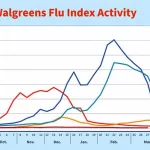Bottom line: Medicare premiums, deductibles and out‑of‑pocket limits are all climbing again in 2025. Part B will hit $185 a month, the Part A hospital‑stay deductible rises to $1,676, and a new $2,000 drug‑spending cap is on the way. If you’re wondering how these numbers will affect your budget, you’re in the right place. I’m going to break it down in plain language, share a few real‑world examples, and give you practical steps you can take right now.
Big Numbers
Let’s start with the headline figures. The table below pulls the latest data from the Centers for Medicare & Medicaid Services (CMS) and trusted industry sources. All amounts are for 2025 unless noted otherwise.
| Component | 2024 Amount | 2025 Amount | Increase |
|---|---|---|---|
| Part A hospital deductible | $1,632 per benefit period | $1,676 per benefit period | +$44 (2.7 %) |
| Part A coinsurance (days 61‑90) | $408 per day | $419 per day | +$11 (2.7 %) |
| Part B standard premium | $174.70 per month | $185.00 per month | +$10.30 (5.9 %) |
| Part B annual deductible | $240 | $257 | +$17 (7.1 %) |
| Part D average base premium | $34.70 | $36.78 | +$2.08 (6 %) |
| New out‑of‑pocket drug limit | — | $2,000 per year | — |
Those numbers may look like just a few dollars here and there, but they add up fast—especially when you combine premiums, deductibles, and coinsurance over a year. Below, I explain why they’re rising and what you can actually do about it.
Why Costs Rise
Three big forces are pulling Medicare costs upward: healthcare inflation, higher Medicare utilization, and recent policy changes. Let’s unpack each one.
Healthcare Inflation
U.S. healthcare spending has been outpacing the overall economy for years—about 5‑7 % per year, according to the Kaiser Family Foundation. That inflation feeds directly into the premiums and deductibles CMS sets each fall. When hospitals, physicians and drug manufacturers charge more, Medicare has to adjust.
Medicare Utilization
The average beneficiary is living longer and managing more chronic conditions. CMS projects a 10 % rise in the number of Medicare enrollees by 2030, and longer lifespans mean more doctor visits, more hospital stays, and more prescription fills. More utilization = more dollars paid out, which pushes the system to raise rates to stay solvent.
Policy Changes
Two policy pieces are especially relevant for 2025:
- New high‑cost drugs—Leqembi, a recent Alzheimer’s treatment, is expected to cost Medicare roughly $2.7 billion a year (a study). The expense flows into the Part B premium.
- Inflation Reduction Act—starting in 2025, the law caps out‑of‑pocket drug spending at $2,000 and requires manufacturers to negotiate prices on certain high‑use medications. While the cap protects retirees from runaway drug bills, the negotiation process also shifts some costs back onto the program, influencing premiums.
What It Means for You
Now that you understand the “why,” let’s focus on the “how.” How will these changes affect your wallet, and what can you do right now to stay in control?
Budget‑First Approach
Grab a notebook (or a spreadsheet) and plug in the following simple formula:
- Standard Part B premium × 12 months = annual premium cost.
- Add the Part B deductible ($257) and expected coinsurance (estimate $300–$500 based on past usage).
- Include Part A deductible ($1,676 per hospital stay) if you expect any inpatient care.
- Estimate Part D premium (≈ $36.78) plus any extra cost for high‑income IRMAA adjustments.
For a typical retiree with modest health needs, the total Medicare‑related out‑of‑pocket expense in 2025 could climb from roughly $3,400 last year to about $4,200—a $800 jump. Knowing that figure ahead of time empowers you to adjust other parts of your budget (maybe trim a streaming service or re‑evaluate discretionary spending).
Plan‑Shopping Tips
Don’t wait until the November open enrollment window (Oct 15 – Dec 7) to compare your options. Here are three things to look at:
- Medicare Advantage “give‑back” plans—some private plans cover all or part of the Part B premium. If you’re currently on Original Medicare, a give‑back could offset the $185 premium entirely.
- Medigap (Supplement) policies—these policies can cover the Part A deductible, Part B coinsurance, and even the new $2,000 drug cap. Run a quick cost‑benefit analysis (see the table below).
- Income‑Related Monthly Adjustment Amount (IRMAA)—if your modified adjusted gross income (MAGI) from two years ago exceeds $103,000, you’ll pay extra. Check the latest IRMAA brackets early so you’re not surprised when your bill arrives.
Medigap vs. Advantage Comparison
| Feature | Medigap (Stand‑Alone) | Medicare Advantage |
|---|---|---|
| Covers Part A deductible | Yes (Plan F, G, N, etc.) | Usually No, unless “extra‑help” benefits apply |
| Covers Part B coinsurance | Yes | Depends on plan; many have $0‑$20 copays |
| Out‑of‑pocket drug cap | None (you pay full drug costs) | Built‑in $2,000 cap for 2025 |
| Monthly premium | Varies; often $100‑$200+ extra | Often $0‑$20, but includes Part B premium |
| Network restrictions | No—any Medicare provider | Yes—must stay in plan’s network |
If you value predictability and don’t mind paying a higher monthly premium, a Medigap Plan G can shield you from the rising deductible and coinsurance. If you’re comfortable with a network and want the drug‑cap protection, an Advantage plan with a give‑back might be the sweeter deal.
Tax‑Planning Angle
The Social Security Cost‑of‑Living Adjustment (COLA) for 2025 is slated at about 3.2 %. That bump lifts the average monthly benefit by roughly $60, but the same increase is partially swallowed by the higher Part B premium (which is automatically deducted). A quick calculation shows a net gain of only $50 for most beneficiaries.
If you’re filing taxes, remember that medical expenses exceeding 7.5 % of your Adjusted Gross Income (AGI) can be deducted. The higher Medicare out‑of‑pocket figures may push you over that threshold, giving you a modest tax break. It’s worth discussing with a CPA who specializes in senior finances.
Practical Strategies
Calculate Your Expected Premiums
I’ve created a simple spreadsheet you can download (just click “Download Premium Calculator” on my site). It asks for:
- Your current Part B premium or IRMAA tier.
- Estimated number of hospital stays (to apply the $1,676 deductible).
- Projected drug spending (to see how the $2,000 cap helps).
Plug the numbers in, and the sheet instantly shows your 2025 total Medicare cost, plus the difference from 2024. Seeing the exact dollar amount is often an eye‑opener.
When to Consider a Medigap Policy
If you expect at least one hospital admission per year, a Medigap plan can save you $1,600+ on the Part A deductible alone. Add the coinsurance savings for Part B and you could be looking at $2,000–$3,000 in avoided expenses—often more than the extra monthly premium you’d pay for a supplemental plan.
Take Advantage of the New Part C Mid‑Year Notice
Starting in 2025, Medicare Advantage plans must send you a mid‑year notification of any unused benefits. That means if you’ve got a dental or vision allowance you haven’t used, the plan will remind you to schedule that appointment before the year ends. It’s a small change, but it helps you squeeze every dollar of value out of your plan.
Review Your Income‑Based Adjustments Early
Because IRMAA is based on the tax return you filed two years ago, you can anticipate a higher premium well before the official announcement. If your income has dropped (e.g., you sold a home or your spouse retired), you can request a new determination from the Social Security Administration. It’s a quick phone call that could shave $30–$70 off your monthly bill.
Bottom Line
The 2025 Medicare cost increase is real, but it isn’t a mystery you can’t solve. The premiums, deductibles and new drug cap stem from three predictable forces: rising health‑care prices, more people using services, and policy tweaks aimed at keeping the program afloat.
By doing three things—calculating your own projected costs, comparing Original Medicare with Medigap and Advantage options, and staying on top of income‑based adjustments—you can turn a potentially stressful budget surprise into a manageable part of your retirement plan.
Now it’s your turn. Grab the premium calculator, log into the Medicare Plan Finder before October 15, and ask yourself: Am I comfortable paying a higher monthly premium for predictability, or would I rather gamble on a lower‑cost Advantage plan with a give‑back? Whatever you decide, you’ve got the facts, the tools, and a friendly voice cheering you on.
If you have questions, want to share how you’ve handled past Medicare changes, or just need a sounding board, feel free to leave a comment below. I’m here to help you navigate this journey—because navigating Medicare shouldn’t feel like wandering in a maze.


















Leave a Reply
You must be logged in to post a comment.